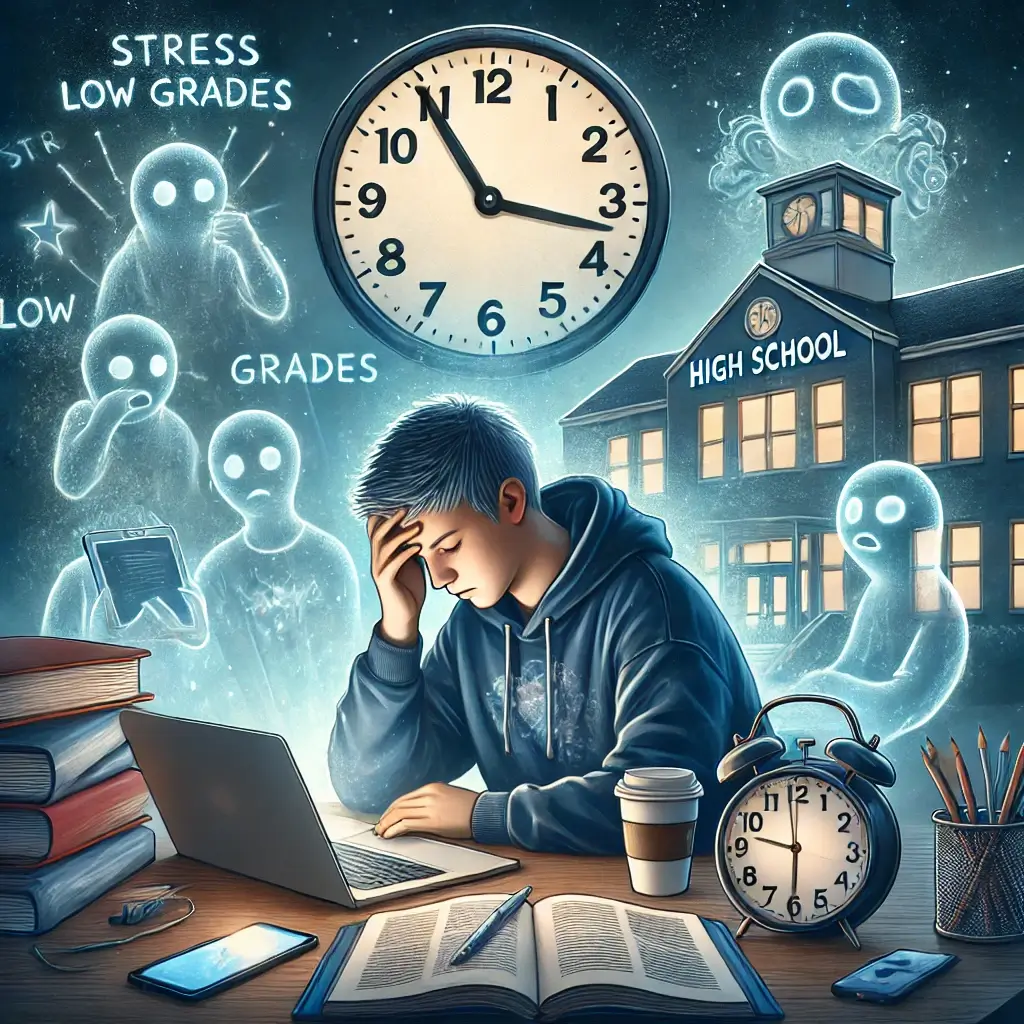The Growing Crisis of Teen Sleep Deprivation
Adolescence is a pivotal period of growth, yet a mounting crisis threatens the success and well-being of teens worldwide: sleep deprivation. Sleep plays an indispensable role in learning, memory, and emotional regulation, but for most teenagers, it has become a luxury rather than a necessity. According to Dr. Elena Rodriguez, Director of Sleep Medicine at Stanford Children’s Hospital, “We’re facing a teen sleep crisis that directly impacts academic achievement, with 73% of teens being chronically sleep-deprived.” This widespread deprivation is attributed to a collision between biological rhythms and societal demands.
The Science Behind Teen Sleep Patterns
The teenage brain operates on a delayed sleep-wake cycle, driven by later melatonin release, which naturally shifts the optimal sleep window to 11 PM–8 AM. Despite this, many schools start as early as 7 AM, requiring teens to wake during crucial stages of memory consolidation, a process that occurs predominantly between 6 and 9 AM. This misalignment significantly hinders academic performance. Studies reveal that teens who sleep fewer than 8 hours experience a 40% drop in academic performance, and the cumulative impact on their physical and mental health is severe. Addressing these challenges demands a multifaceted approach involving parents, schools, and technology-driven solutions.
Critical Research Findings on Sleep and Academic Success
A groundbreaking 2024 study in the Journal of Adolescent Health tracked 5,000 teenagers and uncovered a striking disparity: those who achieved 8–10 hours of sleep had GPAs averaging 0.8 points higher than their sleep-deprived peers (Journal of Adolescent Health, 2024). This research confirms earlier findings about the critical role of sleep in academic success. Memory consolidation, problem-solving, and information retention are all impaired by insufficient rest, as shown by a 2024 report in Sleep Science Quarterly (Sleep Science Quarterly, 2024).
The Impact of Sleep Deprivation on Academic Performance
Specifically, students with fewer than 7 hours of sleep experience: A 33% decline in academic performance, 40% lower test scores, and a 45% reduction in information retention. Behavioral consequences of chronic sleep deprivation are equally concerning. These include: A 60% increase in attention problems, 55% higher rates of anxiety, and a 42% rise in disciplinary issues. Despite these alarming statistics, the challenges teens face are systemic. Technology use, early school start times, and inconsistent sleep schedules exacerbate sleep deprivation. However, emerging solutions offer hope.
Implementing Solutions for Better Teen Sleep
Effective interventions require collaboration between families and educational institutions, supported by technology. Below are actionable steps that can significantly improve teen sleep patterns: For Parents: Create a Sleep-Friendly Environment: Blackout curtains, noise-canceling devices, and room temperature control (65–68°F) can enhance sleep quality. A consistent, calming bedtime routine also helps regulate circadian rhythms.
Technology Management for Better Sleep
Limit Technology Exposure: Research has shown that blue light emitted by screens suppresses melatonin production. Parents can enforce device shutdowns an hour before bedtime or utilize blue light filters (Adolescent Development Review, 2024). Encourage Consistency: Regular sleep and wake times, even on weekends, reduce sleep debt and improve overall sleep efficiency.
School-Based Interventions
For Schools: Adopt Later Start Times: Studies show that schools starting at 8:30 AM or later see a 40% improvement in academic performance and a 30% reduction in behavioral issues (Educational Psychology Journal, 2024). Delayed start times align with teens’ biological clocks, allowing for more restorative sleep. Educate on Sleep Hygiene: Workshops for students and parents can foster awareness about the importance of sleep and its impact on health and learning.
Technological Solutions for Better Sleep
Leverage Technology: Sleep Tracking Apps and Devices: Wearables and mobile applications can monitor sleep patterns, providing actionable data to improve habits. Habit-Formation Gadgets: Smart lighting systems and white noise generators help teens wind down and stay asleep.
Community Benefits of Sleep-Friendly Policies
Communities that prioritize adolescent sleep experience tangible benefits. For example, in districts that implemented later school start times, not only did academic performance improve, but rates of teen depression and anxiety also decreased significantly (Stanford Sleep Medicine Research, 2024). These changes also benefit families, as fewer disciplinary issues reduce household stress.
Moving Forward with Sleep Solutions
The evidence is unequivocal: addressing teen sleep deprivation is vital for their academic and emotional well-being. Solutions are within reach, from creating supportive home environments to advocating for systemic changes in school policies. By understanding and respecting the biological needs of teenagers, parents and educators can empower them to succeed both academically and personally. As Dr. Rodriguez aptly states, “By working with, not against, teen biological sleep patterns, we can unlock their full potential and set them on a path to lifelong success.”
Research Sources
References: Journal of Adolescent Health (2024), Sleep Science Quarterly (2024), Stanford Sleep Medicine Research (2024), Adolescent Development Review (2024), Educational Psychology Journal (2024)

